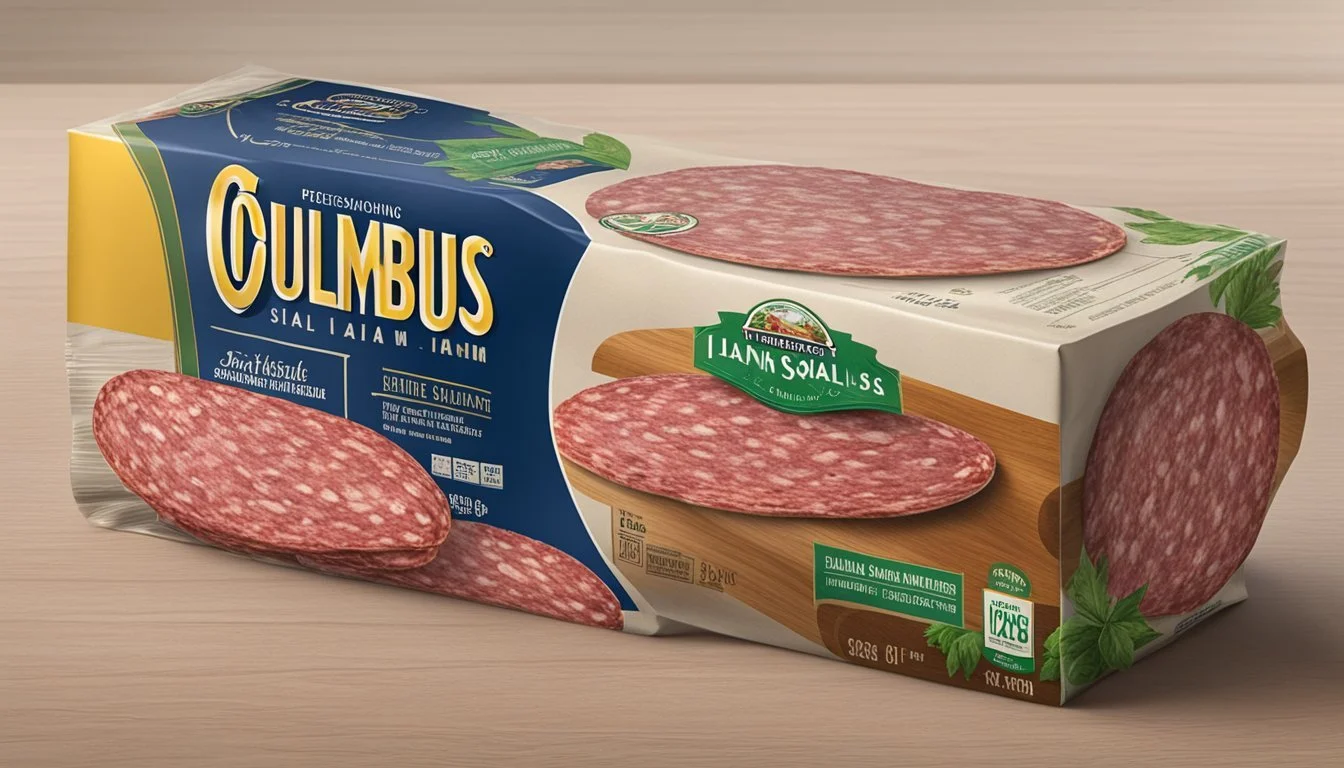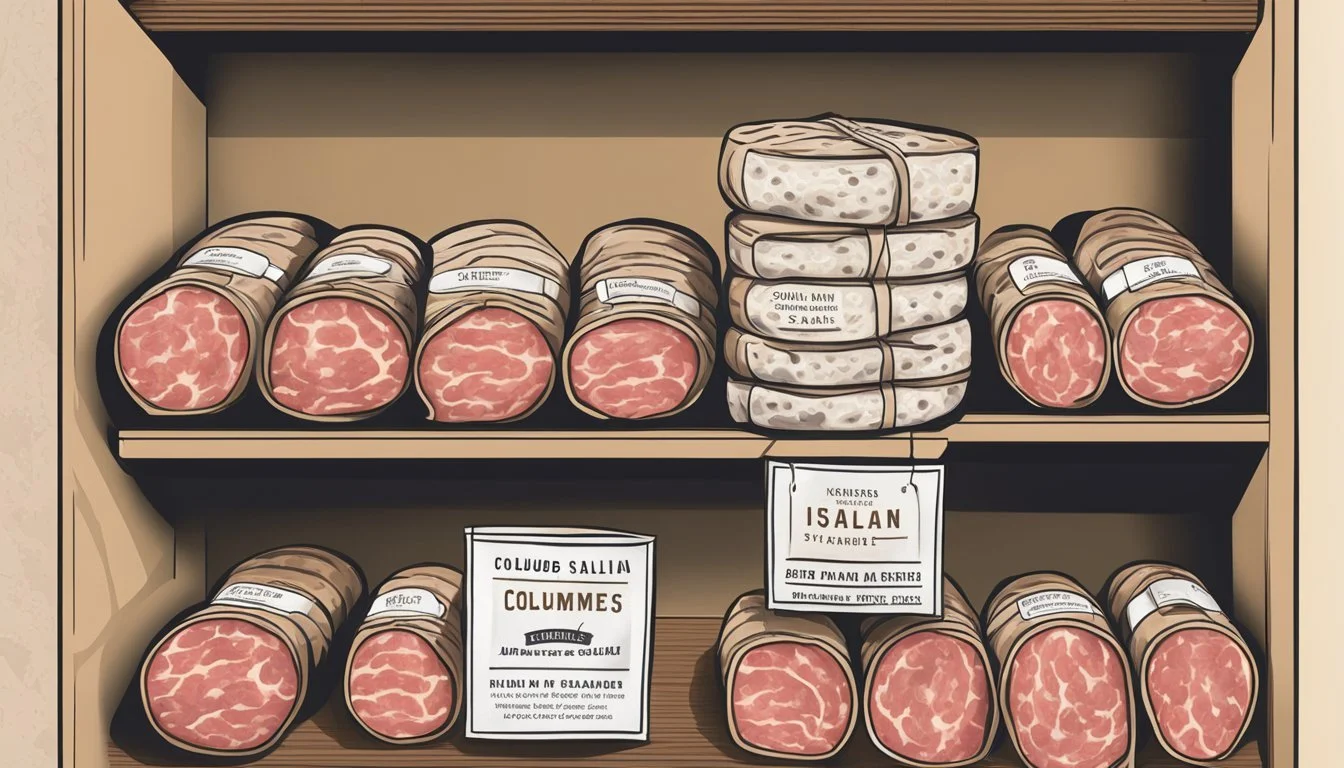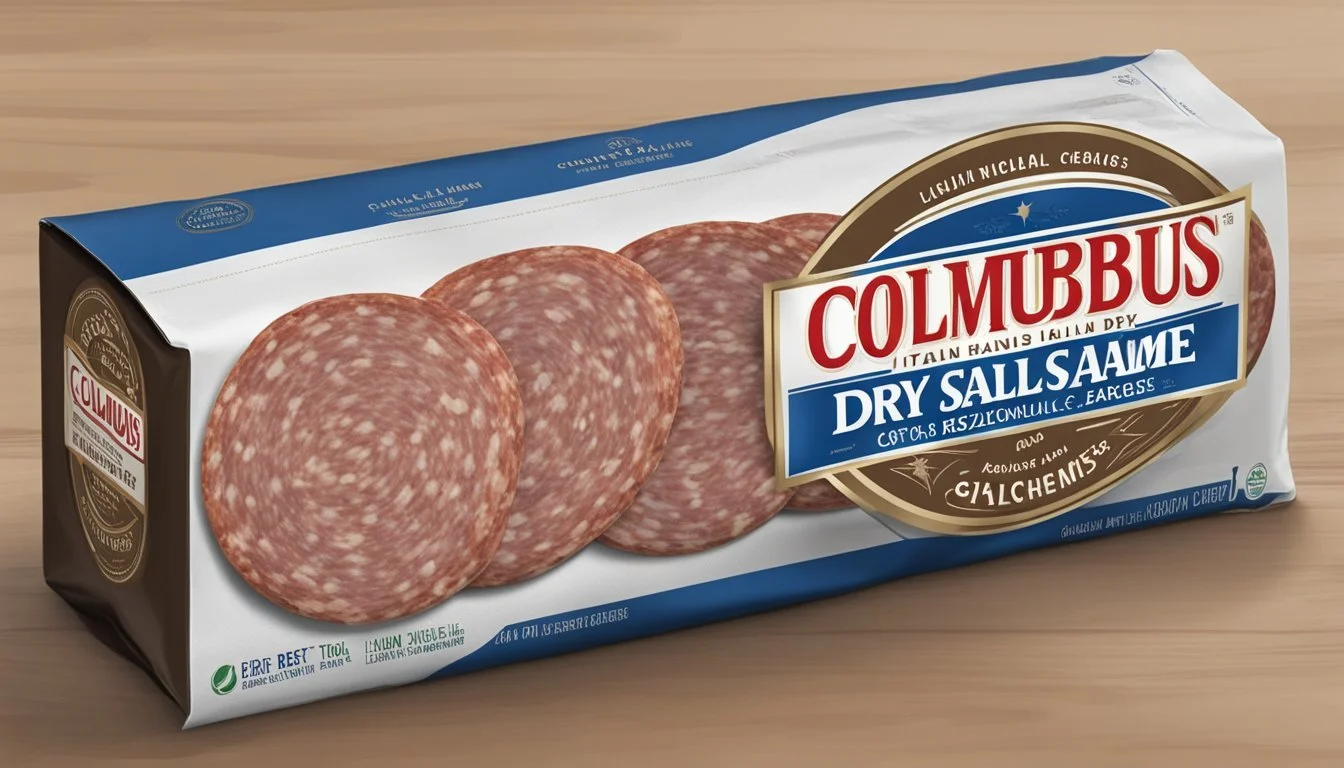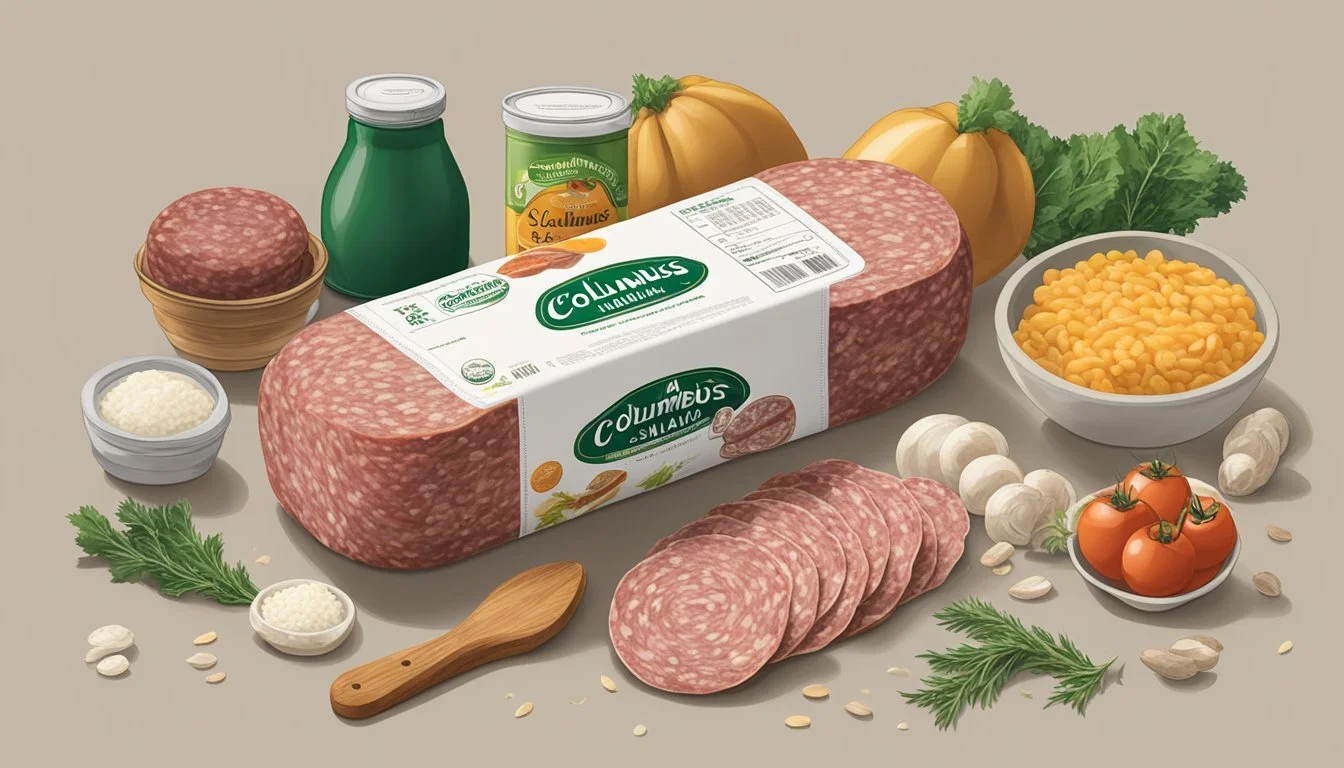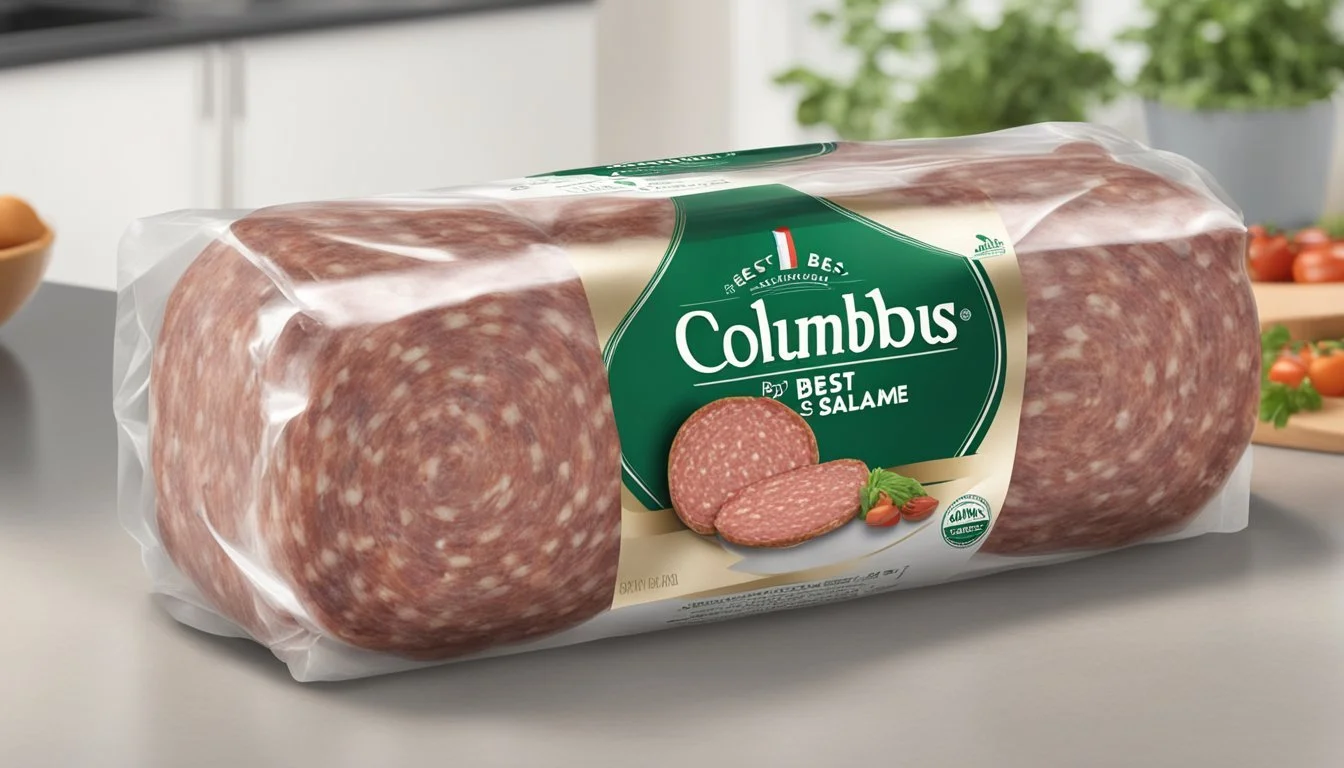How Long Does Columbus Italian Dry Salame Last?
Shelf Life and Storage Tips
Italian dry salame, such as the ones produced by Columbus, is a product of time-honored meat preservation techniques, combining select cuts of pork with a signature blend of spices. The shelf life of this cured meat is of considerable interest to both connoisseurs and casual consumers, as proper storage ensures the quality and safety of the product. Unopened Columbus Italian dry salame can last up to six weeks without refrigeration. When stored in the refrigerator, it lasts even longer, remaining safe to consume for an indefinite period, thanks to the curing process that inhibits bacterial growth.
Once opened, the salame's exposure to air allows bacteria to reach the surface of the sausage, shortening its shelf life. It is advisable to consume sliced Columbus Italian dry salame within three weeks when refrigerated. Moreover, the salame should be kept in an airtight container or wrapped appropriately in plastic or foil to preserve its quality. Freezing unopened salame can extend its best quality for up to 10 months; however, it will remain safe to eat beyond that timeframe if kept at a constant temperature of 0° F.
Understanding the lastingness of Italian dry salame is key to enjoying its rich flavors at their best and avoiding food wastage. It is also important for consumer safety, as proper storage prevents the risk of foodborne illnesses commonly associated with deli meats. With careful handling and storage, Columbus Italian dry salame offers a convenient and delicious option for various culinary needs.
Understanding Dry Salami
Dry salami is a type of cured meat predominantly made from pork, although other meats can be used. This curing process involves a meticulous approach where salt, spices, and sometimes wine are combined with the ground meat mixture. The purpose of the salt is not only to season the salami but also to draw out moisture, aiding in the preservation and creating an environment unfavorable to harmful bacteria.
Key Ingredients & Their Role:
Pork: The primary meat used, providing flavor and texture.
Fat: Integral for the characteristic marbling, adding richness.
Salt: Essential for curing, enhances flavor, and extends shelf life.
Spices: Typically include pepper, garlic, and others, contributing to the salami's distinct taste.
Wine: Sometimes added for a unique flavor note and to assist in the fermentation process.
Curing Agents: Such as nitrates or nitrites, help prevent spoilage and maintain color.
Through fermentation, beneficial bacteria partially break down the sugars in the meat, releasing lactic acid which further preserves the salami. Aging then follows fermentation; during this phase, the salami dries out and matures in flavor in a controlled environment, often for several weeks to months.
The characteristics of dry salami include:
A firm texture: Achieved through the drying and aging processes.
Tangy flavor: A result of fermentation.
Long shelf life: Due to the preservation techniques used.
The longevity of salami greatly depends on various factors like packaging, storage conditions, and whether it's been sliced. Vacuum-sealed salami maintains quality for a longer period compared to those in paper or plastic wraps. After opening, dry salami should be kept refrigerated to extend its usability, with unopened dry salami capable of lasting for several weeks at room temperature and potentially "indefinitely" in the fridge according to USDA guidelines.
Factors Affecting Shelf Life
The shelf life of Columbus Italian Dry Salame can vary considerably based on several factors. Understanding these factors helps to maximize the product's longevity and maintain its quality.
Storage Conditions
Proper storage is crucial for preserving the shelf life of Columbus Italian Dry Salame. The salame should be kept in the refrigerator at a temperature below 40°F to inhibit the growth of bacteria and mold. For longer storage, it can be placed in a freezer inside a heavy-duty freezer bag, although this may affect texture. Storing it at room temperature is not recommended as it significantly reduces shelf life and can accelerate spoilage.
Refrigerator: Below 40°F, lasts several weeks if unopened; 3-5 days once opened.
Freezer: Can extend shelf life; use heavy-duty freezer bags to prevent freezer burn.
Salami Composition
Columbus Italian Dry Salame consists of cured meat, primarily pork, that contains a balanced amount of fat and is seasoned with salts and spices. The curved meat undergoes drying and fermentation, processes essential for developing its flavor and texture. These characteristics of the salame inherently contribute to its longer shelf life when compared to other uncured meats (What wine goes well with cured meats?).
Texture and Moisture: Drier composition, less prone to spoilage.
Cured Meat: The curing process helps to preserve the meat.
Preservation Methods
The use of preservatives such as nitrates in Columbus Italian Dry Salame serves as a barrier to spoilage and helps in extending shelf life. The application of preservative methods such as curing, drying, and fermentation makes the salame less hospitable to mold and bacteria. Packaging plays an essential role; once opened, the salame should be wrapped in plastic wrap, aluminum foil, or placed in an airtight container to maintain freshness.
Airtight Packaging: Use foil, plastic, or airtight containers after opening.
Preservatives: Nitrates are used to extend shelf life and inhibit microbial growth.
Identifying Spoilage
Preserving the quality and safety of Columbus Italian Dry Salame involves recognizing signs of spoilage. Spoiled salame can host bacteria growth and exhibit distinct visual, olfactory, and textural indicators.
Visual Indicators
When inspecting Columbus salame for spoilage, one should look for:
Color: The usual color of Italian Dry Salame is a reddish-pink. Any discoloration or dark spots may suggest mold or bacteria presence, signaling spoilage.
Mold: While some salame can develop harmless white mold, black, green, or fuzzy mold is a clear sign that the salame should be discarded.
Olfactory Signs
The sense of smell is a powerful tool for detecting food spoilage:
Off Odor: A sharp, unpleasant smell resembling ammonia or rotten eggs is a strong indication of spoiled salame.
Smell: Italian Dry Salame should have a rich, meaty smell with hints of spices. Any deviation from this can suggest the onset of spoilage.
Textural Changes
Lastly, the texture of the salame provides crucial clues about its freshness:
Texture: Fresh Columbus salame is firm but not overly hard. If it feels excessively slimy or sticky, spoilage may have occurred.
Drying Out: If the salame has become excessively hard, beyond its typical dryness, it may be an indication that it is no longer fit for consumption.
By regularly checking these aspects, one can ensure the enjoyment of Columbus Italian Dry Salame at its best quality and avoid the risks associated with spoiled cured meats.
Proper Storage Techniques
Storing Columbus Italian dry salame properly is crucial for maintaining its quality and extending its shelf life. Attention to temperature control and protection from air exposure is key.
Refrigeration Best Practices
For optimal preservation, Columbus Italian dry salame should be kept refrigerated. Once opened, it should be stored in the fridge, maintaining a temperature below 40°F. This practice helps to extend the salame's shelf life up to 6 weeks. Additionally, the refrigerator should provide a cool and consistent environment. One should:
Wrap the cut end of the salame with plastic wrap or aluminum foil.
Place the wrapped salame inside an airtight container to prevent the intake of moisture and other odors.
Freezing Dry Salame
Freezing is a suitable option for extending the shelf life of Columbus Italian dry salame beyond refrigeration limits. When properly stored, salame can last in the freezer for up to 6 months. Steps to freeze salame include:
Wrap the salame in heavy-duty aluminum foil or a freezer bag to protect its quality.
Label the package with the current date to track how long it’s been stored.
Packaging for Freshness
Proper packaging plays a vital role in keeping Columbus Italian dry salame fresh. To preserve the flavor and texture, one must:
Keep the original vacuum-sealed packaging intact until ready to use, as this will maintain its shelf life.
For salame that has been opened, rewrap securely using plastic wrap, foil, or place in an airtight container to minimize exposure to air and moisture.
Maximizing Salami Enjoyment
To truly savor Columbus Italian Dry Salame, it is essential to consider both how it is served and what it is paired with, as these factors greatly enhance its flavor and texture.
Serving Suggestions
For optimal tasting, Columbus Salame should be served at room temperature to let the full range of flavors and the firm texture come to the forefront. It is typically enjoyed fresh, with a noticeable appearance of specks of fat and spices that are indicative of its quality. When preparing for serving, the salame should ideally be sliced thinly to allow for a more refined tasting experience.
Charcuterie Board: Place thinly sliced Columbus Salame on a charcuterie (What wine goes well with charcuterie?) board, ensuring each piece is easily accessible. Group with slices of Genoa salami, pepperoni, and mortadella to offer a variety of tastes and textures.
Sandwiches: Incorporate Columbus Salame into sandwiches, layering with fresh cheese and bread to complement its robust flavor.
Salad: Top a fresh salad with Columbus Salame to add a savory punch and a satisfying chewiness.
Pairing with Other Foods
Columbus Italian Dry Salame pairs exceptionally well with a range of foods that bring out its unique characteristics.
Cheese: Combine with cheeses such as Parmigiano-Reggiano or aged cheddar; the sharpness of the cheese balances the salame's rich flavors.
Wine: Serve with a full-bodied red wine to match the salame's intensity, or a crisp white wine to contrast the richness.
Bread: Enjoy with slices of crusty artisanal bread, which acts as a neutral base and allows the salame to be the star.
Pizza: Add thinly sliced Columbus Salame on pizza for a boost of flavor and a pleasant, slightly crispy texture when baked.
By following these suggestions, one can augment the enjoyment of Columbus Italian Dry Salame and appreciate its traditional, well-crafted sensation on the palate.
Safety Considerations
When discussing the longevity of Columbus Italian Dry Salame, safety is paramount. Consumers must understand how handling and storage impact salame safety to prevent foodborne illnesses. The salame is a cured product and thus has a long shelf life; however, identifying spoilage signs and adhering to storage guidelines are essential for safe consumption.
Shelf Life and Spoilage Unopened Columbus Italian Dry Salame should be kept in a cool, well-ventilated area. Once the seal is broken, salame must be stored in the refrigerator. If stored properly, it can last for several months, with the expiration date serving as a useful quality indicator. Signs of spoilage include:
Off odors
Slimy texture
Discoloration
USDA Recommendations The United States Department of Agriculture (USDA) advises consumers to follow safe food handling practices and storage to minimize the risk of food poisoning. These include:
Refrigerating meats promptly
Keeping a clean environment when slicing salame
Washing hands thoroughly before and after handling food
Freezing For extended storage, salame can be frozen. To best maintain quality:
Wrap tightly in aluminum foil or a freezer bag
Freeze at 0° F, which will keep it safe indefinitely
Thaw in the refrigerator overnight before use
It's important to remember that while freezing can keep the salame safe, the optimal sensory qualities are best enjoyed before the expiration date. Always prioritize food safety by observing these considerations to enjoy Columbus Italian Dry Salame without health risks.
Frequently Asked Questions
When considering the longevity and safety of consuming Columbus Italian Dry Salame, there are several common inquiries. These questions focus on the safety and qualities of the product after the expiration date, indications of spoilage, and whether it can be consumed without cooking.
Can I Eat Salami After Expiration Date?
Generally, one can consume Columbus Italian Dry Salame even after the expiration date if it has been stored properly. Unopened dry salami can last for up to six months past its sell-by date in the pantry. Always inspect the product for signs of spoilage before consumption.
How to Tell if Salami Has Gone Bad?
To determine if salami has gone bad, look for noticeable changes such as:
Mold: Any visible mold that isn't a part of the original curing process signifies spoilage.
Odor: An off odor that is sour or rancid is a clear indicator.
Texture: If the salami feels excessively slimy or sticky, it should not be consumed.
Color: Discoloration can also suggest spoilage.
Is Salami Safe to Eat Without Cooking?
Columbus Italian Dry Salame is safe to eat without cooking as it is a dry-cured product. The curing process involves preserving the meat with salt and spices, which helps prevent the growth of bacteria that cause food poisoning. However, always ensure that the salami has been stored correctly and shows no signs of spoilage before eating it uncooked.
Conclusion
Columbus Italian Dry Salame is a shelf-stable meat known for its longevity due to the curing process it undergoes. The typical shelf life of this dry salame is approximately 4-6 weeks after purchase when stored properly. Consumers can enjoy the full flavor of the salame when adhering to appropriate storage conditions. To maintain its quality, it should be kept in a cool, dry place and preferably consumed at room temperature.
Storage Considerations:
Before opening: Store in a cool, dry environment.
After opening: Refrigerate to extend freshness.
After opening the packaging:
Salame should be consumed within three to seven days for optimal taste.
It is crucial to keep the salame wrapped to prevent dehydration and flavor loss.
Shelf Life Overview:
Unopened: Stable for several weeks.
Opened: Best if used within a week.
For those concerned with the 'best by' date, Columbus Italian Dry Salame often remains safe to consume past this date, given the preservative nature of the curing process. Nevertheless, flavor and texture may alter over time, with spoilage becoming a risk if the salame is not stored as recommended.
In summary, to ensure the enjoyment of Columbus Italian Dry Salame's rich flavors and quality, attention to storage conditions is key, and prompt consumption once opened is advised.
Additional Resources
Nutritional Information: For individuals monitoring their diet or interested in the nutritional aspects of Columbus Italian Dry Salame, the manufacturer’s website typically provides comprehensive details. Consumers are advised to check the product’s label as well for specific information on calories, fat content, sodium, and proteins.
Ingredient Labels: Consumers who prefer to be informed about what’s in their food should read the ingredient labels on Columbus Italian Dry Salame packaging. Manufacturers are required to list all ingredients, which can help buyers to understand what they're consuming and to identify any potential allergens.
USDA Guidelines: The United States Department of Agriculture (USDA) offers extensive resources on food safety and preservation. They provide valuable information on the shelf life of meat products, including salami, and proper storage methods to ensure food safety.
Recipes: Columbus Italian Dry Salame can be used in an array of recipes. Culinary websites and cookbooks are excellent resources for those looking to incorporate this salame into meals, providing insight into traditional and modern uses in various cuisines.
Tradition: The tradition behind Columbus Italian Dry Salame is rooted in Old World techniques. Information on the history and traditional methods of making Italian dry salame can often be found in culinary history books, food culture libraries, and documented on food enthusiast sites.
For exact guidelines on shelf life and safe consumption, consumers are encouraged to refer to:
Columbus Craft Meats official website
USDA resources online
Food safety experts’ publications and websites
By leveraging these resources, individuals can ensure they enjoy Columbus Italian Dry Salame while adhering to proper food safety protocols and appreciation of its culinary heritage.


